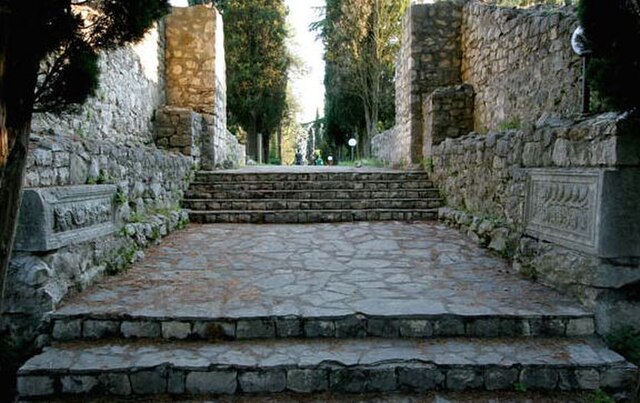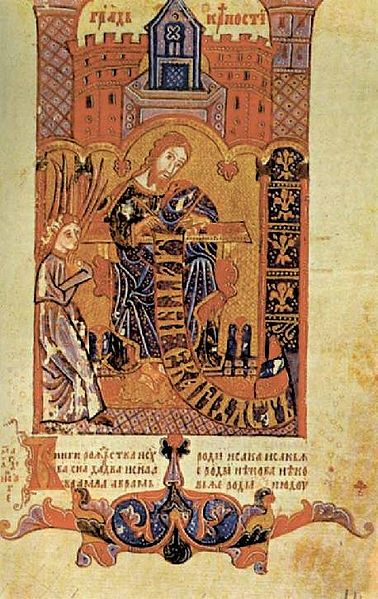The House of Kotromanić was a late medieval Bosnian noble and later royal dynasty. Rising to power in the middle of the 13th century as bans of Bosnia, with control over little more than the valley of the eponymous river, the Kotromanić rulers expanded their realm through a series of conquests to include nearly all of modern-day Bosnia and Herzegovina, large parts of modern-day Croatia and parts of modern-day Serbia and Montenegro, with Tvrtko I eventually establishing the Kingdom of Bosnia in 1377. The Kotromanić intermarried with several southeastern and central European royal houses. The last sovereign, Stephen Tomašević, ruled briefly as Despot of Serbia in 1459 and as King of Bosnia between 1461 and 1463, before losing both countries – and his head – to the Ottoman Turks.
A reconstructed chapel in Bobovac which housed a burial vault of the Kotromanić royal family
Bosnia and Herzegovina, sometimes known as Bosnia-Herzegovina and informally as Bosnia, is a country in Southeast Europe, situated on the Balkan Peninsula. It borders Serbia to the east, Montenegro to the southeast, and Croatia to the north and southwest. In the south it has a 20 kilometres long coast on the Adriatic Sea, with the town of Neum being its only access to the sea. Bosnia has a moderate continental climate with hot summers and cold, snowy winters. In the central and eastern regions, the geography is mountainous, in the northwest it is moderately hilly, and in the northeast it is predominantly flat. Herzegovina, the smaller, southern region, has a Mediterranean climate and is mostly mountainous. Sarajevo is the capital and the largest city.
Iron Age cult carriage from Banjani, near Sokolac
Mogorjelo, an ancient Roman suburban Villa Rustica from the 4th century, near Čapljina
Hval's Codex, illustrated Slavic manuscript from medieval Bosnia
Gazi Husrev-beg Mosque in Sarajevo, dating from 1531





